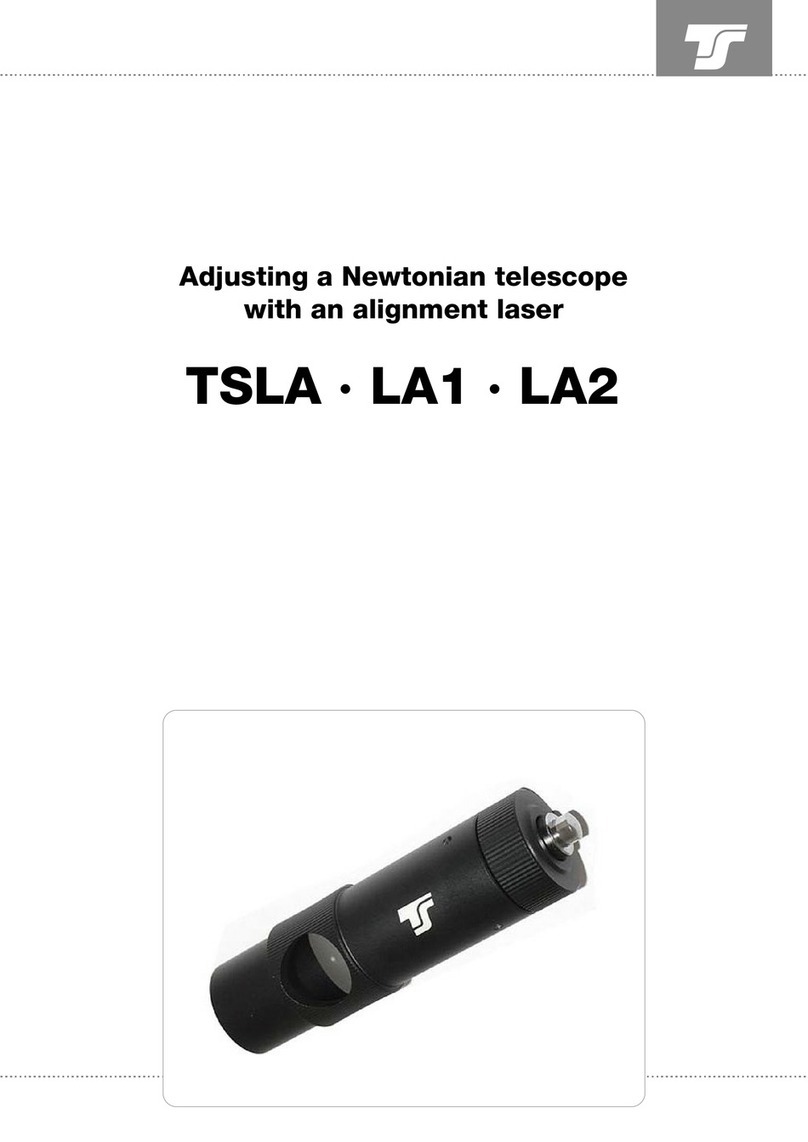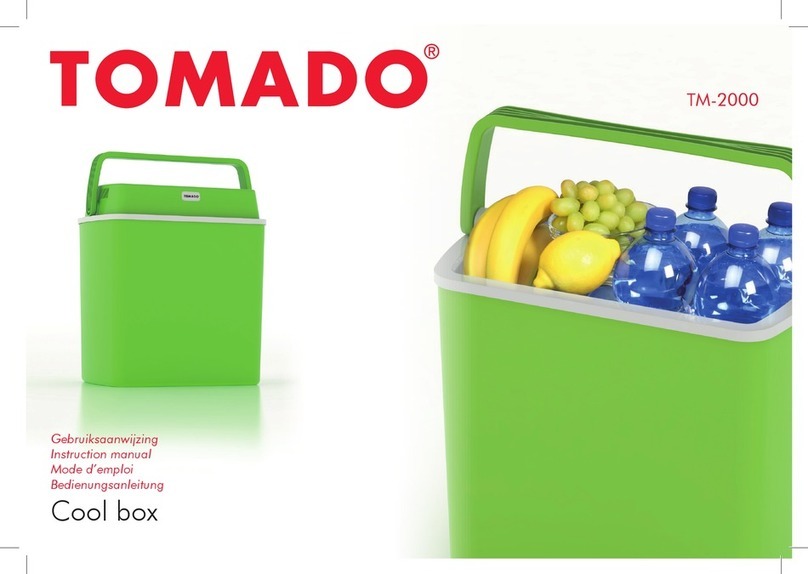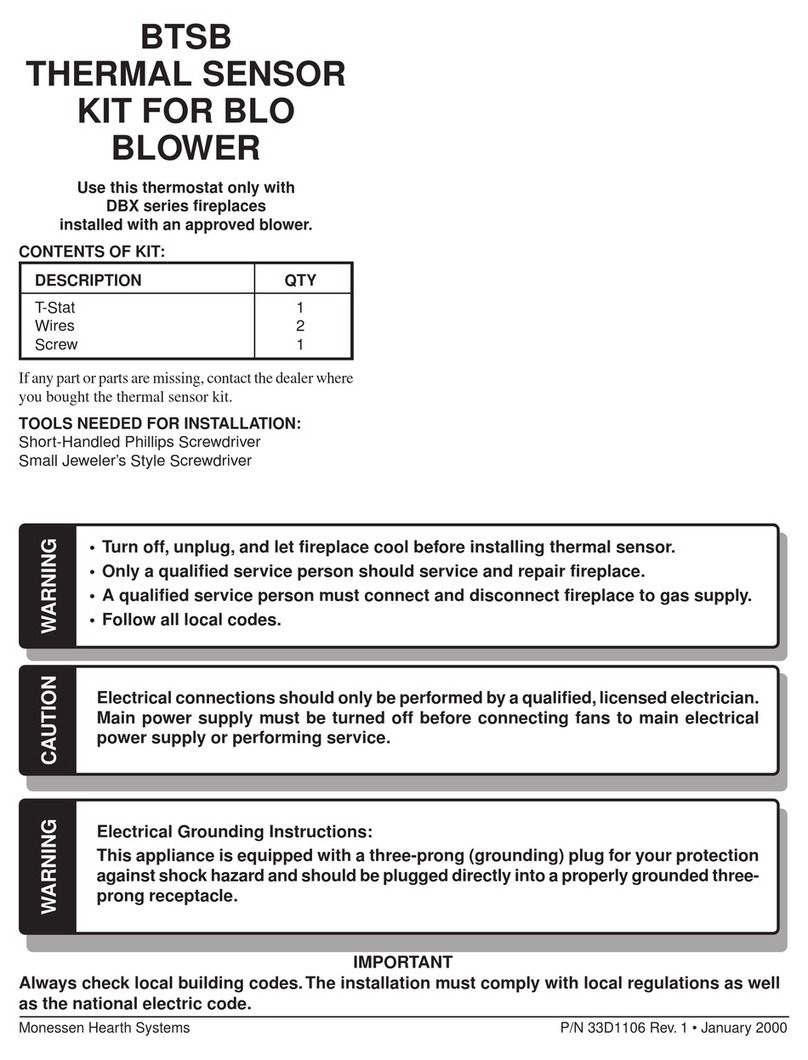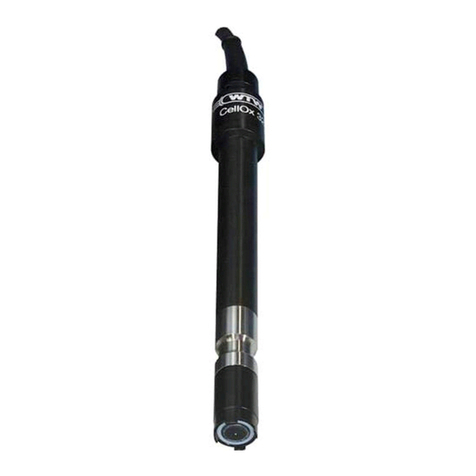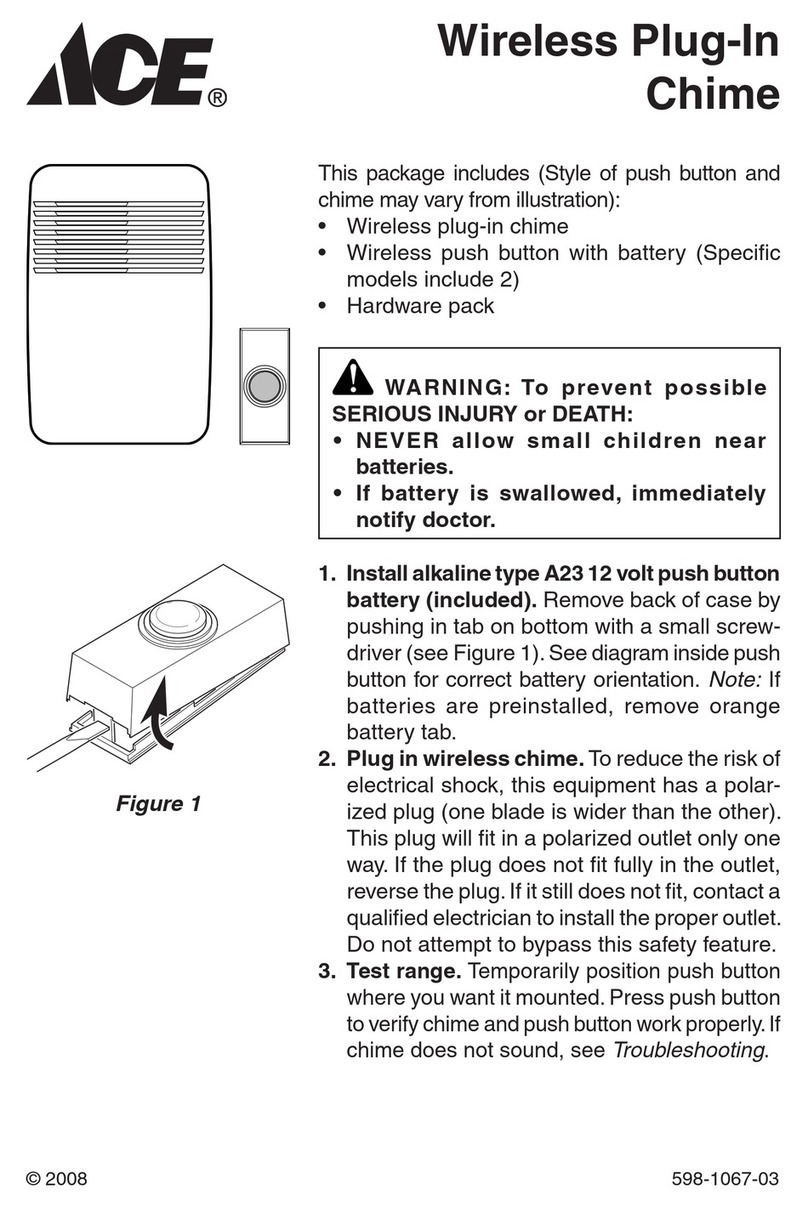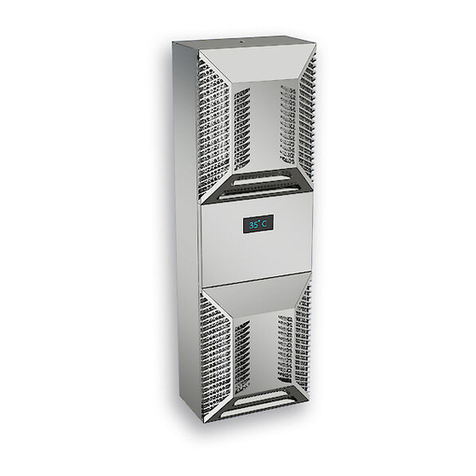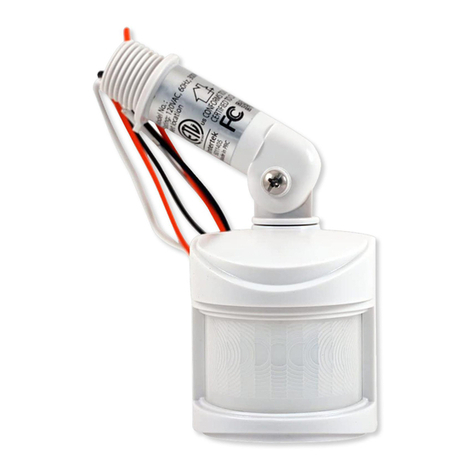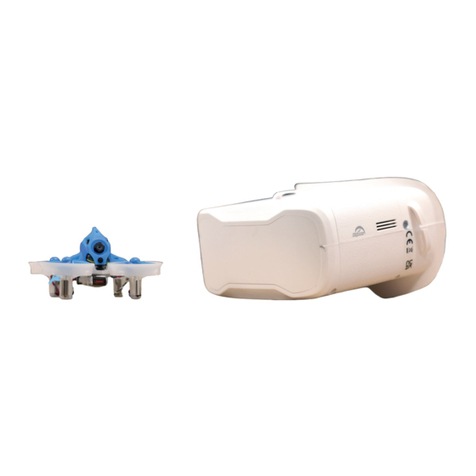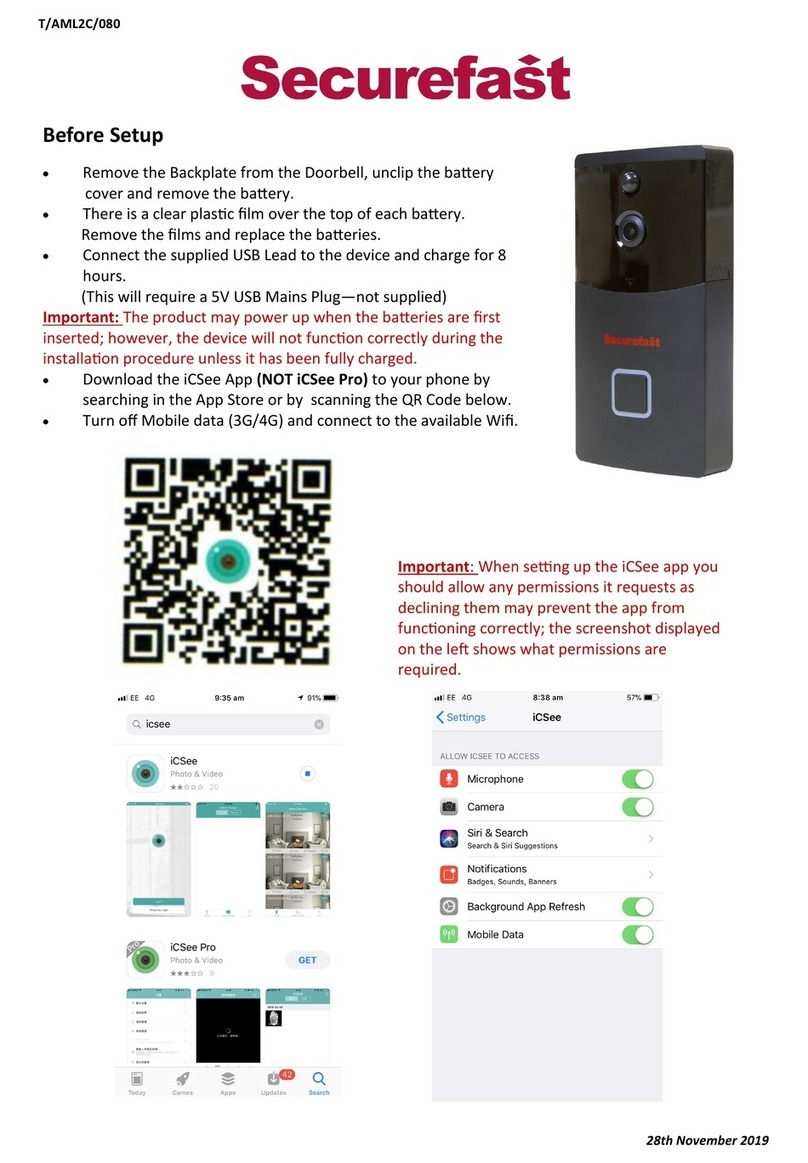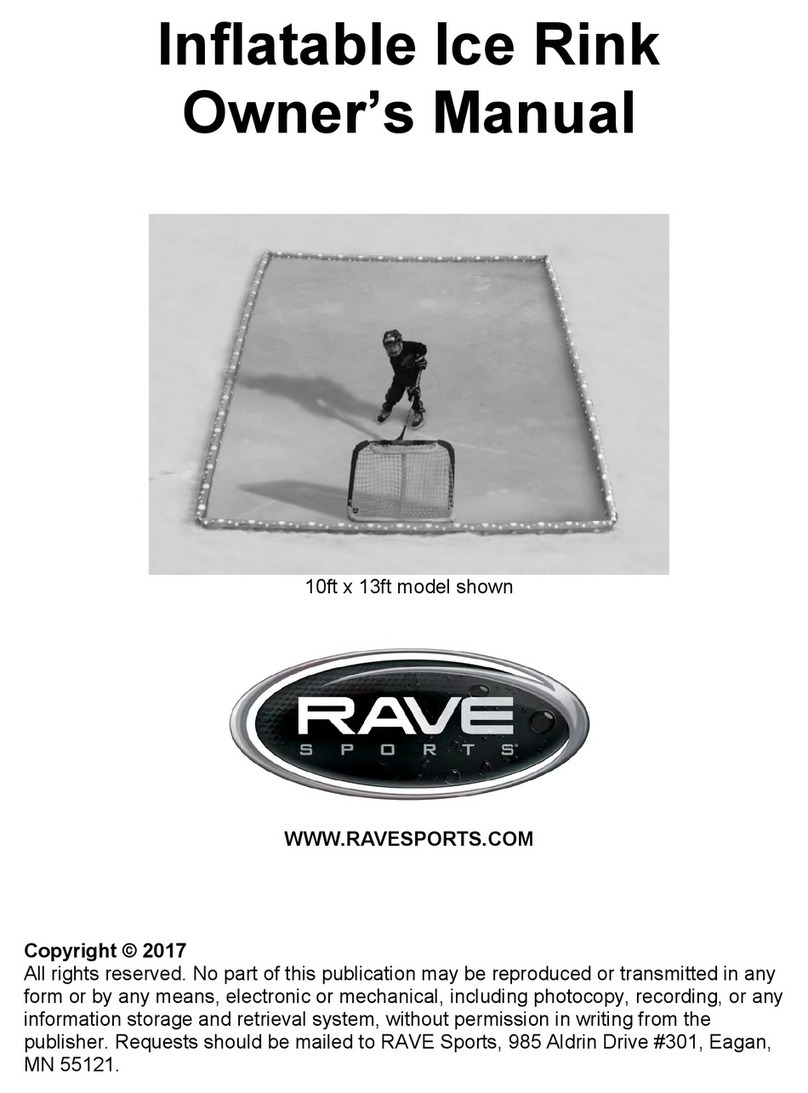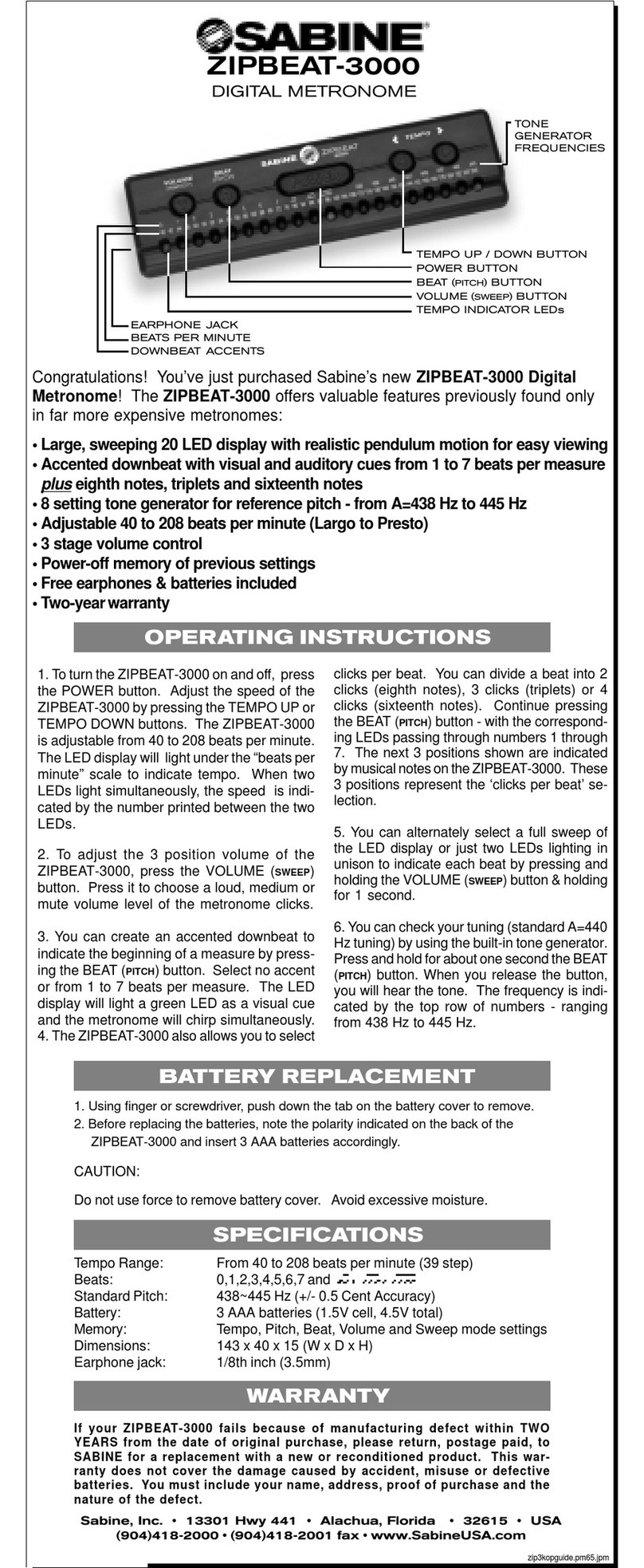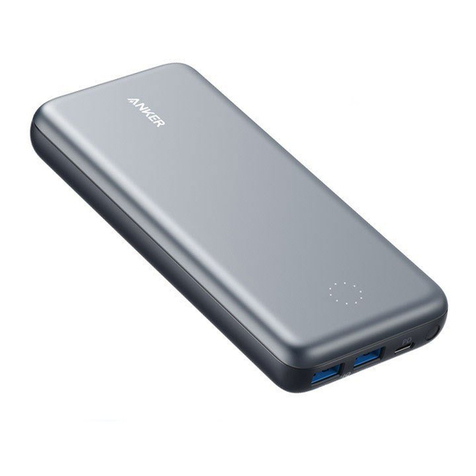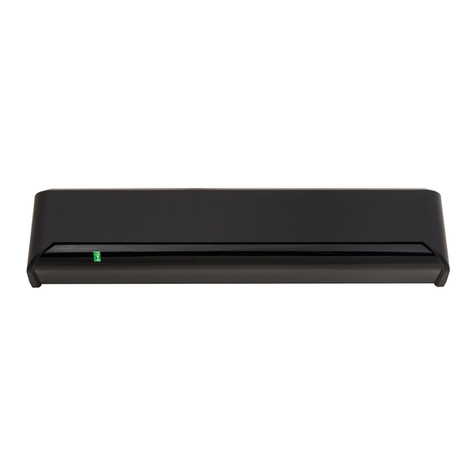Intercomp WIM Strip Sensor User guide

intercompcompany.com
ISO 9001:2008 Registered
Strain Gauge Transducer Technology
Weigh-in-Motion Strip Sensor Application Guide

WIM Strip Sensor Application Guide
2
Intercomp strain gauge strip sensors provide accurate dynamic weighing across many applications in installations all over the
world. The performance, reliability and longevity of Intercomp’s WIM strip sensors provide the best return on investment of any
form of precision WIM technology. Strip sensors involve minimally invasive installation in concrete or asphalt, and installations
can be used in low speed (LS-WIM) and high speed (HS-WIM) applications.
WIM strip sensors can be installed in rows depending on the application and required accuracy. Providing the sensors alone,
or with electronics and software, Intercomp sensors are ideal for integration into complete WIM systems. When combined
with cameras, detectors, and data transmission devices, they are capable of serving as standalone virtual remote weigh
stations or work in tandem with commercial weigh stations while operating as pre-selection for enforcement.
In-Ground Strip Sensors for WIM
WIM screening allows transportation
engineers to study traffic characteristics for
the planning and maintenance of roadways.
Data Collection
Vehicle data such as classification
and flagged violations can be remotely
accessed for enforcement efforts
downstream of WIM site.
Screening for Enforcement
Meets or Exceeds ASTM E1318-09
Type I, II, III and COST 323 A(5), B+(7)
or B(10) Performance Requirements
Strip Sensors
Intercomp strip sensor WIM systems
are designed to deliver best-in-class
accuracy across a wide range of
speeds and temperatures.
ACCURACY

Visit us online at intercompcompany.com or call us at +1 763-476-2531 Worldwide
ISO 9001:2008 Registered
3
Traffic can be directed to specific lanes, off
the mainline for further inspection, or to
continue on without further interruption.
Pre-Selection
Data collection to identify and divert
overloaded vehicles for protecting bridges
and infrastructure.
Bridge Protection
Weight based information is used to confirm
vehicle loading or calculate fees. In tolling,
heavier vehicles are charged more than lighter
vehicles due to impact on roadways.
Tolling/Ports of Entry
Intercomp designs and manufactures weighing and measurement solutions to help our customers in WIM product
deployment maximizing system performance and compliance.
Manufactured at our headquarters in the United States, Intercomp products build upon 40 years of global industry
expertise and applications experience to provide our customers superior quality, reliability and certainty in the
products and services we deliver.
INTERCOMP WIM STRIP SENSORS
Worldwide Sites and Distribution

WIM Strip Sensor Application Guide
4
Designed from NTEP/OIML approved scale technology, the sensor measures the magnitude of mechanical quantities
such as force, torque, load, and pressure to provide the benefits customers are accustomed to with precision scale
technology. This enables customers to comply with accepted metrology, standardization, testing, certification and
accreditation used by legal metrology authorities and industries worldwide.
The Intercomp strain gauge strip sensor:
• Not position sensitive to tire placement with consistent linear output along entire length of sensor.
• Designed to measure only vertical force by removing side loads associated with pavement crowding or side
or angle loading.
• Internal temperature compensation adjusts for changes in temperature at sensor. This improves consistency
of output from day to day and season to season and reduces calibration frequency as compared to piezo-electric
and quartz sensors.
• The capacitance of a long cable does not affect the measurement characteristics of the strain gauge sensor,
so there is no need for a charge amplifier.
• Long life span – designed for mainline operation of 5 or more years.
Strain Gauge Technology for Weigh-In-Motion
Intercomp’s GaugeSense™Technology actively senses, corrects, and controls to provide the most
accurate measurement possible. The inherent benefits of this technology are integrated into the
WIM strip sensor with many advantages for in-road use.

Visit us online at intercompcompany.com or call us at +1 763-476-2531 Worldwide
ISO 9001:2008 Registered
5
Strain gauge technology is used in static weighing for direct weight enforcement and is accepted as the most accurate and
reliable means to weigh a vehicle. Intercomp’s strip sensors integrate the same strain gauge technology incorporated into a
compact strip for accurate WIM applications. Offering the lowest cost of ownership of any precision WIM sensor, the price,
durability, and longevity of Intercomp sensors deliver performance to rely on.
Weigh-in-Motion Strip Sensors Patent pending
The sensors are installed within 3"
wide (75mm) channels cut into the
existing asphalt or concrete road
surface. Installation can be
completed in a single day.
Flexibility—Integration from Sensor
Replacement to Full Systems
Maintenance—Can be Ground Flush
with Changing Road Conditions
Accurate— Across Variety of Speeds
& Temperature Extremes
Durability—Field Proven Through
Millions of Cycles
Installation—In a Single Day with
Minimal Traffic Interruptions
Variable Sizes—
Sensor comes in 59", 69",
79"(1.5, 1.75, 2m) Lengths
Capable of meeting or exceeding
ASTM E1318-09 Type III and COST
323 A(5) performance requirements

WIM Strip Sensor Application Guide
6
Transportation officials rely on Weigh-In-Motion
(WIM) sensors for collecting vehicle data at high
speeds for highway data and traffic monitoring.
Traffic volume, speed, vehicle classifications,
and vehicle weights are all part of monitoring
current usage and highway planning for the future.
Strip sensors for data collection incorporate strain gauge sensor technology:
• WIM Site Installation employs Two to Four Sensors, Loop & Electronics
• Provides Accurate Data for Roadway Monitoring & Planning
• Detection of Overloaded Vehicles & Incidence
• Integrate Sensors in Existing Pavement or during Site Replacement
Performance of WIM site has a Gross Vehicle
Weight (GVW) accuracy for data collection
which meets or exceeds ASTM 1318 Type I
and COST 323 B(10) WIM requirements.
DATA COLLECTION
Typical Sensor Configurations
DATA COLLECTION | CASE STUDY
NETHERLANDS: DATA COLLECTION
Just outside of Rotterdam in the Netherlands, Intercomp strip sensors are
installed in multiple lanes to gather traffic and vehicle data in the mainline.
As Rotterdam is one of the busiest shipping ports in the world, gathering
traffic and vehicle data supplies the Ministry of Infrastructure and the
Environment valuable information for roadway planning and utilization.
Sensors were installed in four lanes, with two sensors per lane for this mainline application. The WIM site
experiences high speed vehicle traffic, with significant heavy vehicles due to the commercial traffic for the port.
Additionally, one lane of traffic required bi-directional capability, so monitoring traffic in both directions was enabled
for that lane.
Delivering GVW accuracy of better than COST 323 B+(7) requirements with the bi-directional and single lanes, the
Intercomp strip sensors satisfied the requirements to provide excellent traffic and weight data for this high traffic
volume WIM site.
As the Intercomp sensors were integrated with the local operator’s electronics and software, this adds to the variety
of electronics platforms that are currently capable of working with Intercomp WIM sensors.

Visit us online at intercompcompany.com or call us at +1 763-476-2531 Worldwide
ISO 9001:2008 Registered
7
IN-GROUND
Weight Enforcement is vital to minimize the damage
caused by overloaded vehicles to roads and highways,
and to increase safety for the operators. Detection of
these vehicles at high speeds (HS-WIM) is an efficient
and effective method for screening for enforcement
or pre-selection of vehicles for static weigh stations.
Strip sensors for pre-selection or enforcement incorporate strain gauge
sensor technology:
• WIM Site Installation Employs Four to Six Sensors, Loop & Electronics
• Consistent Accuracy for Selection of Vehicles from Screening
• Improve Vehicle & Operator Safety
• Simple Integration of Sensors into Existing Enforcement Systems
Regions can have different requirements for accuracy
of systems employed in screening for enforcement
WIM systems. COST 323 A(5) and COST 323 B+(7)
are commonly referenced for these screening for
enforcement sites. Six sensors (three pairs) have
been used in some countries for these applications.
Performance of WIM sites have a Gross Vehicle Weight
(GVW) accuracy for screening for enforcement meeting
or exceeding ASTM 1318 Type III and COST 323 B+(7)
WIM requirements.
ENFORCEMENT & PRE-SELECTION
Typical Sensor Configurations
ENFORCEMENT & PRE-SELECTION | CASE STUDY
OREGON DOT: PRE-SELECTION
The state of Oregon in the US has used pit-type Weigh-In-Motion scales
for pre-selection in the mainline for many years. Though pleased with the
accuracy the scales delivered, the cost of installation and the ongoing
maintenance required led the state to evaluate different HS-WIM options.
Familiar with the benefits of strain gauge technology, Oregon DOT (ODOT)
chose to test Intercomp strip sensors as a WIM sensor replacement integrated
into their current electronics and software.
Pilot sites with four sensors in two rows were installed to conduct evaluations of possible WIM replacement scales
and sensors. Vehicles crossed the mainline WIM sites at speeds ranging from 40-80mph (65-130kph), and these
vehicle records were compared to weights gathered with static scales at weighstations downstream from the
WIM sites.
These sites were operated by the ODOT, and when comparing the data from WIM to static scales, performance
of 3-4% GVW error were found in diverse weather conditions over time.
This confirmed ODOTs previous positive experience with strain gauge WIM technology, but Intercomp supplies this
performance in a smaller, easier to install strip sensor. In the future, when replacing current or creating new WIM
sites, the State of Oregon has committed to use Intercomp strip sensors for their High-Speed WIM mainline technology.

WIM Strip Sensor Application Guide
8
Typical Sensor Configurations
Tolling based on weight or axle configurations
is done with Weigh-In-Motion (WIM) technology.
Integrated into existing lanes in the mainline or
slower traffic areas, vehicles can be measured
rapidly without stopping. Automated systems
provide accurate information in real-time for
vehicle processing.
Strip sensors for tolling incorporate strain gauge sensor technology:
• WIM Site Installation Employs Four to Eight Sensors, Loop & Electronics
• Automate Tolling Process
• Detection of Vehicle Weights for Weight Based Tolling
• Detection of Axle Configuration for Vehicle Classification Based Tolling
• Use Sensors in Low or High Speed tolling Applications,
including Mainline Installations
Performance of these WIM sites for tolling
applications have a Gross Vehicle Weight (GVW)
accuracy meeting or exceeding ASTM 1318 Type
III and COST 323 A(5) WIM requirements.
TOLLING (ETC)
TOLLING | CASE STUDY
THESSOLONIKI, GREECE: FEE COLLECTION
Gathering WIM Gross Vehicle Weights (GVW) in individual traffic lanes allows
for revenue determinations to be made for weight based vehicle transactions.
Customers in the Greek area of Macedonia required a WIM system capable
of obtaining vehicle weight data in existing vehicle lanes and to integrate
into their current system.
Highly accurate performance was required for this site, with 4 rows of sensors installed in each lane of traffic.
Speeds at this WIM site are 5-10mph (8-16kmh), and the Intercomp products were ideal for the site as they do not
require drains compared to other strain-gauge based technology. The sensors were integrated into systems with
other peripheral equipment, increasing site efficiency by working to process transactions without vehicle stoppage.
WIM performance at installation was consistent across all vehicle lanes, demonstrating under 1% GVW error
compared to a test vehicle with a known static weight. This allows the operators to calculate and manage fees
rapidly and accurately with the strain gauge strip sensors. As a result of this experience, operators in Greece are
looking into integration of the Intercomp strip sensors into additional locations in the region.

Visit us online at intercompcompany.com or call us at +1 763-476-2531 Worldwide
ISO 9001:2008 Registered
9
Typical Sensor Configuration
Screening for vehicle and cargo weights allows for
identification of unloaded, loaded, and overloaded
vehicles. When integrated into existing processes,
dynamic weighbridges with Weigh-In-Motion
technology allows for rapid processing of vehicles
without stoppage and delays.
Strip sensors for ports and gates incorporate strain gauge
sensor technology:
• WIM Site Installation Employs Eight Sensors, Loop & Electronics
• Weigh Vehicles & Cargo without Stopping
• Integrate Sensors into Existing Automated Process
• Couple Sensors with Gate Arms, RFID & Camera Technology
• Installation does not Require Pits or Drains
Performance of these WIM sites meets or exceeds OSHA
requirements in the U.S., ASTM 1318 Type III and COST
323 A(5) Weigh-In-Motion (WIM) requirements, and IMO
and SOLAS Verified Gross Mass (VGM) in regions around
the world.
PORTS/GATES
PORTS & GATES | CASE STUDY
PUERTO CORTEZ, HONDURAS: SEAPORT
Safety standards defined by the International Maritime Organization (IMO)
include a verified gross mass specification for cargo as part of Safety Of Life
At Sea (SOLAS) requirements. As port systems are also increasing automation
throughout all stages of the supply chain of goods, WIM technology is an
excellent fit to achieve the required accuracy by the government without
interrupting the flow of cargo into and out of the port.
WIM sites within the terminal were installed in existing vehicle traffic lanes, with 4 rows of sensors to provide the
accuracy at low speeds of 5-10mph (8-16kmh). The Intercomp sensors were coupled with RFID vehicle identification,
stoplights and gate separation, and the terminal integrated the WIM system data into their gate operating system.
The systems weigh vehicles upon entry and within the terminal for Gross Vehicle Weights, and use tare weights to
obtain cargo weights.
The Intercomp strip sensor WIM system provides weighing accuracy with an error of less than 2% with loaded
vehicles. These systems and their performance comply with Honduran regulations regarding automated cargo
weighing in terminals. As a result, further ports in the region are integrating WIM technology for gate operations.

WIM Strip Sensor Application Guide
10
Installation Notes
Installation of the Strip Sensors is a straightforward
process that takes a single day in the existing roadway.
Performance of any WIM system is dependent on the
quality of the installation and condition of the adjacent
roadway surface. Intercomp recommends site conditions that comply with ASTM1318-09 section 6 and COST 323 section 5
standards when selecting the proper site in order to achieve optimal performance.
The Intercomp WIM system is less susceptible to poor road conditions like rutting. Strip sensors have been installed in
asphalt with significant rutting yet can still exceed ASTM Type III or COST A(5) accuracy standards. Regular inspection of
the road service should be made and rutting progression may require additional grinding of the sensors to match the road
surface followed by recalibration. Intercomp recommends adherence to local WIM standards.
Placing Sensor Sanding Flush
Sensor
Sensitivity (Nominal) 0.75 (0.825)m V/V at 6000lb (3000kg)
Output Variance over the Length of Sensor <0.5±%
Linearity <0.1±% FSO
Hysteresis <0.2±% FSO
Operating Temperature Range -40 to 175 ˚F (-40 to 80˚C)
Temperature Coefficient of Sensitivity 0.002 (0.0036) ±% of Load/˚F (˚C)
Electrical Specifications
6-Conductor Cable: ± Excitation, ± Signal, ± Sense, plus Shield Ratiometric mV/V output, 1mV/V @ 8,000lb Typical
Bridge Resistance: 150 to 205 ohms
Recommended Excitation: 5-10V
Strip Sensors Only with Analog Output
The strain gauge strip sensors are designed to be
used in pairs and can be integrated directly into
customers’ electronics. The sensors are shipped
with variable length cables attached.
The analog output is a mV/V output ratiometric to the
excitation voltage used. In the waveform for a 5 axle
vehicle (see example), the signal is proportional to
the wheel weights experienced by each sensor.
For this option, the customers’ electronics needs
to provide signal conditioning and transmission of
the differential signal to an Analog/Digital Converter.
Intercomp Strip Sensors are offered as Components to be Integrated
with Third-Party Electronics or as Part of a Complete WIM System
Example: 5 Axle Tractor Trailer Vehicle

Visit us online at intercompcompany.com or call us at +1 763-476-2531 Worldwide
ISO 9001:2008 Registered
11
Strip Sensor Signal Converters and CPUs
A/D signal processing and data communication for software or web applications
WIMLOGIX Standard
Output Protocol API SOAP Data Logs
Wheel Load
Axle Load
Gross Vehicle Weight
Speed
Center-to-Center Spacing
Vehicle Class (via Axle Arrangement)
Site Identification Code
Lane & Direction of Travel
Date & Time of Passage
Sequential Vehicle Order
Violation Code
Axle-Group Load
Equivalent Single-Axle Loads (ESALs)
User-Definable Weight Violations
System Requirements ANY .NET ANY ANY
Time Frame REAL TIME REAL TIME REAL TIME DAILY
*Data Fields & Output Format are Customizable
Fully Provided
Handled by Customer Software
WIMLOGIX Standard WIMLOGIX Pro
Strip Sensors with WIMLogix Electronics
Intercomp strip sensors connect to the WIMLOGIX module,
which provides signal conditioning, data acquisition, and basic
processing. The table below illustrates data and communication
options for the WIMLogix modules.
WIMLOGIX MODULE
The WIMLogix Standard performs the A/D
signal conversion, and data from multiple
inputs are passed directly via protocol, or
communicated via Windows™ based API
to separate operating software.
The WIMLogix Pro performs A/D conversion,
and creates and stores vehicle records for
output. Multiple inputs are synchronized, with
onboard processing and storage enabling
operation as a data logger. Data may also be
passed into separate operating software or
web applications hosted on or off-site.

2.8˝
(70mm)
3.0˝
(75mm)
59, 69˝, 79˝
(1,500mm), (1,750mm), (2,000mm)
2.8˝
(70mm)
3.0˝
(75mm)
59, 69˝, 79˝
(1,500mm), (1,750mm), (2,000mm)
2.8˝
(70mm)
3.0˝
(75mm)
59, 69˝, 79˝
(1,500mm), (1,750mm), (2,000mm)
Weight
1.5m Sensor 50lb (22kg)
1.75m Sensor 62lb (28kg)
2.0m Sensor 71lb (32kg)
Dimensions
Length 59, 69, 79in (1.5,1.75,2.0m)
Width 2.80in (70mm)
Height 3.0in (75mm)
General Data for Sensor
Cable Length 100 to 328ft (30 to 100m), Custom Lengths Available
Connector MIL-C-26482 (8-pin Metal Cylindrical Connector, Bayonet Quarter Turn Lock)
Degree of Protection IP 68EN60529
Made In U.S.A.
ISO 9001:2008
Registered
© 2017 Intercomp Company 700733Printed in the U.S.A.
info@intercompcompany.com
Worldwide: +1 763-476-2531
Toll Free: 800-328-3336
Specifications subject to change without notice.
WIM Strip Sensor Application Guide
Table of contents
